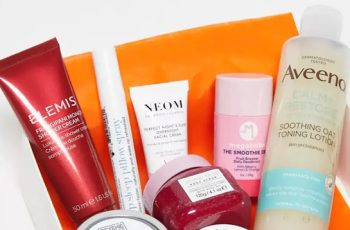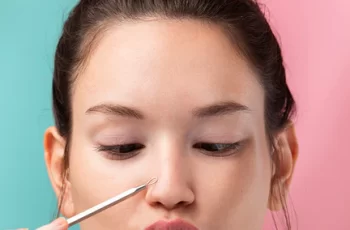
PFAS in Skin Care: Are Polyfluoroalkyl Substances Dangerous?
Per and Polyfluoroalkyl Substances
Numerous ingredients in skincare and cosmetic products face restrictions or bans due to concerns about their toxicity, safety, or hazard potential. Often referred to as the “dirty dozen,” these supposedly toxic chemicals extend beyond a mere twelve, encompassing a broader array of ingredients that warrant caution and avoidance.
Amidst this landscape, Per- and Polyfluoroalkyl Substances (PFAS), known as “forever chemicals,” have become pervasive in cosmetics, valued for their water-resistant and durable characteristics. However, heightened awareness among consumers regarding potential health risks and environmental persistence has prompted regulatory action. Under the Modernization of Cosmetics Regulation Act (MoCRA), the FDA is actively engaged in evaluating and regulating PFAS in cosmetic products, reflecting a proactive response to emerging concerns.
This exploration unravels the multifaceted dimensions of PFAS in cosmetics, delving into regulatory dynamics, associated risks, state interventions, and industry responses within the evolving landscape of “clean skincare.”
PFAS, widely used to enhance the texture and longevity of cosmetic products, have raised concerns due to their persistence in the environment and potential health risks. Despite their utility, the long-term accumulation of PFAS in the body has prompted calls for stringent regulation and their removal from consumer products.
Dangers of PFAs
Studies conducted by the U.S. Environmental Protection Agency have established a link between PFAS exposure and elevated risks of cancer, developmental delays in children, organ damage (such as liver and thyroid), increased cholesterol levels, and compromised immune functions, particularly in young children. Vermont’s proposed legislation, known for its stringent stance on PFAS, extends beyond cosmetics to include a broad spectrum of products, ranging from apparel to outdoor items designed for severe wet conditions, athletic turf, ski wax, and textiles like upholstery, draperies, towels, and bedding intentionally containing PFAS.
FDA’s Expansive Oversight Through MoCRA
The Modernization of Cosmetics Regulation Act of 2022 (MoCRA) represents a landmark expansion of the FDA’s regulatory authority over cosmetics, marking the most significant since the Federal Food, Drug, and Cosmetic Act of 1938. This law aims to enhance the safety of daily-used cosmetic products. MoCRA mandates the FDA to assess the use of PFAS in cosmetics, evaluating scientific evidence and potential risks. Additionally, it requires collaboration with the National Center for Toxicological Research for a comprehensive safety assessment. By December 29, 2025, the FDA is obligated to publish a report on its website, summarizing the outcomes of the safety assessment of PFAS in cosmetic products. This forward-looking initiative aims to bolster the safety of cosmetics used daily by millions.
Regulations and Prohibitions
New Zealand has taken a groundbreaking step by announcing a ban on the use of so-called “forever chemicals” in cosmetics, effective from 2026. The Environmental Protection Authority (EPA) in New Zealand has specifically prohibited perfluoroalkyl and polyfluoroalkyl substances (PFAS) in cosmetics, citing concerns about the potential health and environmental risks associated with these virtually indestructible chemicals.
The ban is part of a broader initiative by the EPA to safeguard against PFAS exposure, encompassing environmental testing and the phased-out use of PFAS-containing firefighting foams. While the EPA acknowledges that PFAS were found in a limited number of cosmetic products, the precautionary approach reflects a commitment to minimizing potential risks. The move positions New Zealand at the forefront globally in addressing PFAS-related concerns, drawing praise from environmental, health, and science specialists.
A growing number of state legislatures are taking decisive actions to address the presence of perfluoroalkyl and polyfluoroalkyl substances (PFAS) in cosmetics and consumer products.
California was the first major jurisdiction to ban all PFAS in cosmetics, in September 2022, with a transitional period for enforcement after 1 January 2025.
Vermont achieved a significant milestone as the state Senate granted final approval to legislation aimed at prohibiting the sale or distribution of cosmetics and menstrual products containing PFAS and other harmful chemicals. The list of affected products includes shampoo, makeup, deodorant, sunscreen, hair dyes, and more. Similar restrictions on cosmetics have been passed in Colorado, and Maryland, set to be effective in 2025. Moreover, various states, including Washington, Oregon, Illinois, Rhode Island, and Georgia, are actively considering similar proposals.
Navigating clean skin care ambiguities
Navigating “Clean Skincare” Ambiguities
“Clean skincare” refers to products without harmful ingredients, but the term lacks a standardized definition , leading to confusion. Reputable companies avoid harmful substances, but the criteria for “clean beauty” vary, making it challenging to discern. California’s Proposition 65 and Hawaii’s sunscreen ban highlight diverse regulations. Dermatologists prefer terms like “safe” over “clean” due to the lack of a scientific definition. Despite 1/3 of beauty products labeled as “clean,” the term’s ambiguity is acknowledged. A standardized definition, using terms like “hazardous” and “safe,” is proposed.
Millions of Americans may be unknowingly exposed to “forever chemicals” known as PFAS from cosmetics and personal care products. A study (2) found that over half of the tested cosmetics products contained PFAS, with most not listing these compounds on their labels. PFAS, linked to various health risks, are intentionally added to products like dental floss, lotion, makeup, and more. The lack of disclosure raises concerns about unintentional exposure, prompting calls for increased regulation and a proposed ban on PFAS in cosmetics. The findings highlight the need for standardized definitions and regulations in the “clean skincare” industry.
(PFAS) has prompted a paradigm shift in regulatory landscapes, risk assessments, and industry practices. As we unravel the multifaceted dimensions of PFAS in cosmetics, it becomes evident that heightened awareness and legislative actions are shaping the trajectory of “clean skincare.” From the FDA’s expansive oversight through the Modernization of Cosmetics Regulation Act (MoCRA) to New Zealand’s groundbreaking ban on “forever chemicals” and state-level interventions in the United States, the industry is at a crossroads. The call for standardized definitions and transparent labeling resonates louder than ever, urging stakeholders to prioritize consumer safety and environmental well-being in this evolving narrative of cosmetic regulation.
A Dermatologist’s Perspective on PFAs in Skincare
PFAs may be banned in skincare soon so reputable companies are already working to remove them from their products. This is my perspective as a dermatologist on the issue.
Skincare Products with PFAs
PFAS are found in various consumer products that come into prolonged contact with human skin, including cosmetics, sunscreens, and water-repellent clothing. PFAS are commonly found in a wide range of skincare and cosmetic products, particularly in items designed to be water-resistant, such as sunscreen, foundation, and moisturizers. Their inclusion enhances product durability against sweat and water.
Can PFAs Absorb Into Skin?
There is evidence to suggest that PFAS can penetrate the skin barrier, particularly when applied topically in cosmetics. (10) The extent of absorption and its implications require further study to fully understand the potential risks.
Risks of PFAs
The concern surrounding PFAS extends beyond individual health risks, including hormonal disruption and increased cancer risk, to broader environmental and ecological impacts. These chemicals are persistent in the environment, posing potential threats to wildlife and ecosystems.
PFAS can accumulate in the human body over time due to their resistance to breakdown, potentially leading to various health issues such as thyroid disease, increased cholesterol levels, and effects on the immune system. The long-term health implications are still being studied, but evidence suggests a link to several chronic conditions.
PFAs on Product Labels
Always read product labels to look for toxic ingredients in your skincare products. You can identify products containing PFAS by looking for ingredients that include terms like “fluoro” or “perfluoro.” Many organizations and environmental groups also publish lists of PFAS-free products. Alternatives to PFAS-containing products include those labeled as clean, organic or natural, though it’s important to verify their certifications and ingredient lists for transparency.
can PFAS absorb into the skin?
INCI Names of PFAs in Skincare
Here are some of the PFA containing ingredients in cosmetics:
Ammonium Perfluorobutane Sulfonate
Diethanolamine Perfluorohexanoate
Perfluoroalkylethyl Phosphate
Perflurodecalin
Perfluoromethylcyclopentane
Perfluorooctane Sulfonamide
Perfluorooctanoic Acid
Perfluorooctyl Triethoxysilane
Perfluorobutane Sulfonic Acid
Sodium Perfluorobutane Sulfonate
Perfluorononanoic Acid
Perfluorodecalin
Perfluorodecalin is a commonly used PFA in skincare that is used for its unique oxygenation properties, which are particularly beneficial in formulations aimed at revitalizing and rejuvenating the skin. Found in oxygenating facial creams and specific types of makeup, this compound helps to enhance oxygen delivery to the skin, promoting better circulation and supporting the skin’s natural healing processes. Its inclusion in cosmetic products leverages the ability to provide a breathable, protective layer, thereby improving the overall appearance of the skin by making it look healthier and more vibrant.


